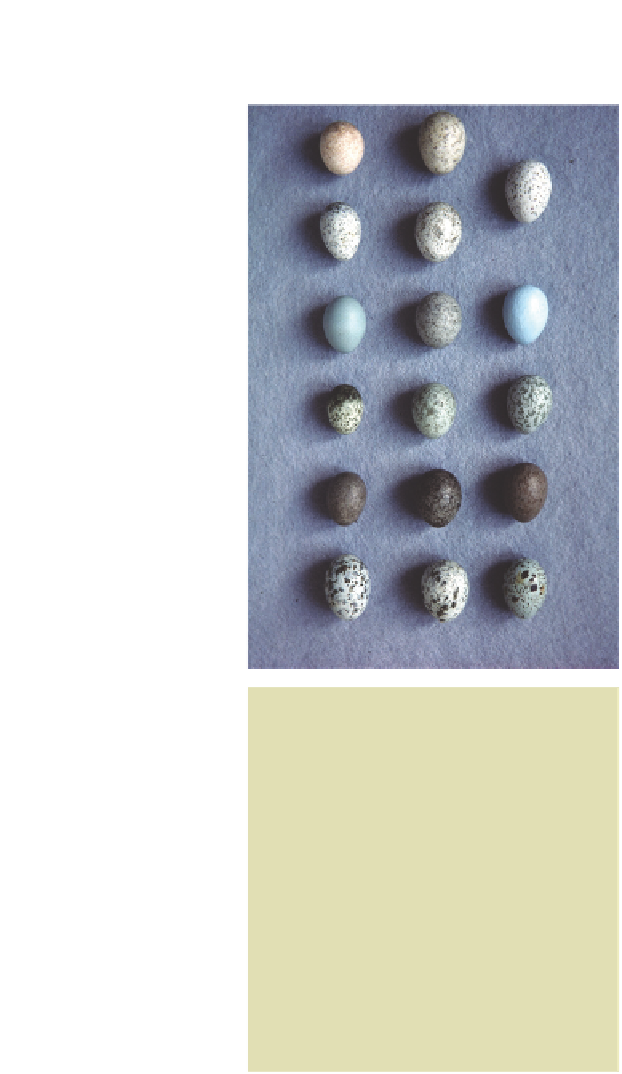Biology Reference
In-Depth Information
The cuckoo family (Cuculidae)
comprises some 140 species. Some 60%
are parental species that build their own
nests and raise their young, as we might
normally expect. The other 40% are
brood parasites. This cheating habit has
evolved three times independently from
parental ancestors within the cuckoo
family tree (Sorenson & Payne, 2005).
One species, the common cuckoo,
Cuculus canorus
, breeds throughout
Europe and northern Asia and has been
particularly well studied. This species
has several genetically distinct host
races, each of which specializes on one
host species and lays a distinctive egg
type that tends to match the egg of its
particular host (Fig. 4.18).
The female cuckoo adopts a particular
procedure when parasitizing a host nest
(Fig. 4.19a). She usually finds nests by
watching the hosts build. Then she waits
until the hosts have begun their clutch
and parasitizes the nest one afternoon
during the hosts' laying period, laying
just one egg per host nest. Before laying,
she remains quietly on a perch nearby,
sometimes for an hour or more. Then
she suddenly glides down to the nest,
removes one host egg and, holding it in
her bill, she then lays her own egg and
flies off, later swallowing the host egg
whole. She is incredibly quick; the time
spent at the host nest is often less than
ten seconds! Having laid her egg, the
cuckoo then abandons it, leaving all
subsequent care to the hosts.
Hosts sometimes reject the cuckoo
egg, but often they accept it (Fig.
4.19b). The cuckoo chick usually
hatches first, needing an unusually short period of incubation, whereupon, just a
few hours old and still naked and blind, it balances the host eggs on its back, one by
one, and ejects them from the nest (Fig. 4.19c). Any newly hatched host young suffer
the same gruesome fate and so the cuckoo chick becomes the sole occupant of the
nest and the hosts slave away, raising it as if it was their own (Fig. 4.19d).
To what extent has each party evolved in response to selection pressures from the
other? Experiments provide evidence for coevolution.
How common
cuckoos lay their
eggs
Fig. 4.18
The common cuckoo,
Cuculus canorus
, has several genetically
different host-races each of which lays
a distinctive egg (central column) which
matches, to varying extents, the eggs
of its particular host species (left-hand
column). In the examples here, the host
species and their corresponding cuckoo
host races are, from top to bottom:
robin, pied wagtail, dunnock, reed
warbler, meadow pipit and great reed
warbler. The right-hand column is of
variously coloured model eggs used to
test host discrimination. From Brooke
and Davies (1988).




























